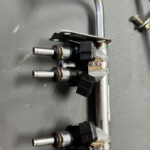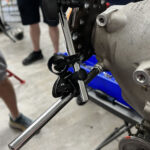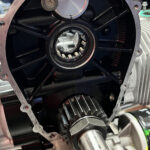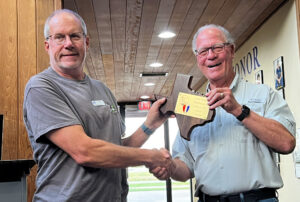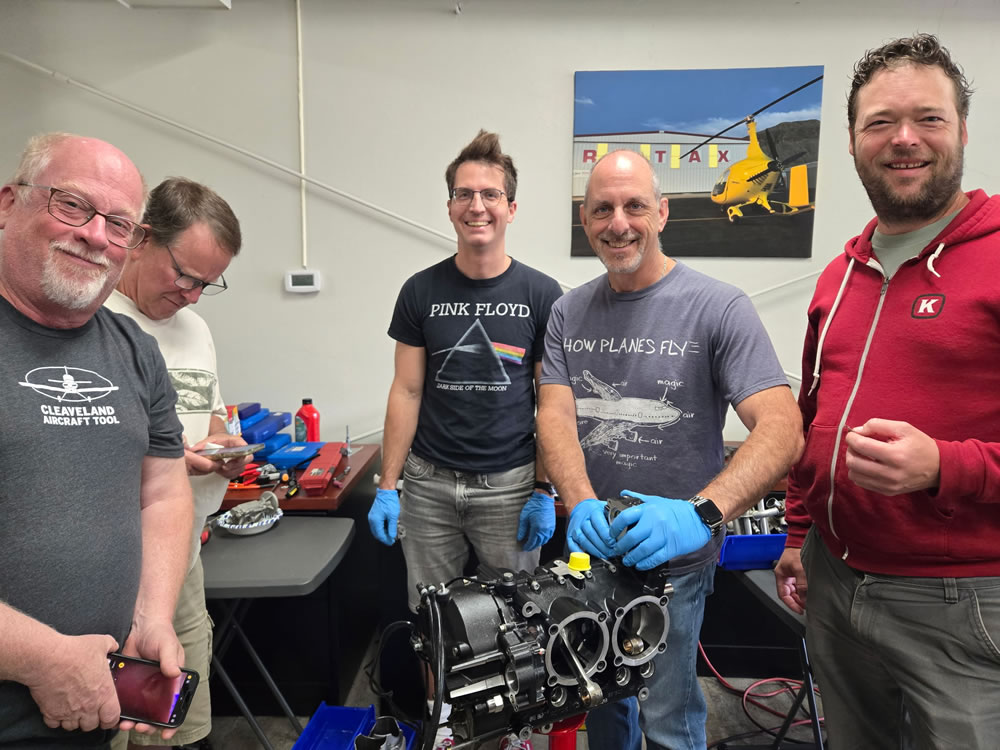
by Pete Miller

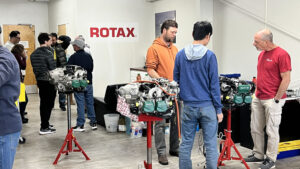 Last month I had another great opportunity. I attended two Rotax certification classes. They were hosted by MotiveAero out of Hurricane, Utah. Because of the warm temperatures in Utah at this time of year, they like to do their summer classes in Petaluma, California. Since I was stationed near there in the Air Force, I quickly jumped on these classes.
Last month I had another great opportunity. I attended two Rotax certification classes. They were hosted by MotiveAero out of Hurricane, Utah. Because of the warm temperatures in Utah at this time of year, they like to do their summer classes in Petaluma, California. Since I was stationed near there in the Air Force, I quickly jumped on these classes.
Rotax offers a series of certificates. I took the Service course, which is aimed primarily at aircraft owners who want to do their own servicing, and I took the Maintenance course. The next level is Heavy Maintenance, but you must wait two years to take that class. The work allowed by each qualification is spelled out in the Maintenance manuals. Essentially, as a Maintenance certified mechanic, I can remove most items from the engine, like the propeller gearbox, but I cannot disassemble that gearbox. Each class was two days long, and there was a test for each class.
There were a variety of students in the classes. There were several owners and builders. All the build projects were Slings. We did have a couple of people who flew their RV-12s to Petaluma. All but two of us were local to the Bay Area and Sacramento. There was a guy from Illinois and then myself.
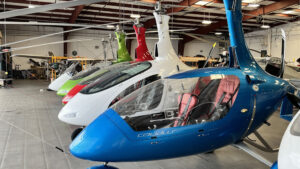 We had classroom time, and then a lot of hands-on practice. There were three run-out engines in the classroom, but we also went into the attached hangar. The hangar was full of gyrocopters…
We had classroom time, and then a lot of hands-on practice. There were three run-out engines in the classroom, but we also went into the attached hangar. The hangar was full of gyrocopters…
During the Service class, we learned the details of an oil change, some of the ignition system, how to do a compression check, and the requirements for periodic maintenance, like the 5-year rubber replacement called for by Rotax. We also learned how to check the crankshaft run-out, twist, and gear lash. These tests would be done in the event of a prop strike. Supposedly, because of the construction of the gearbox, damage from a prop strike could very well be confined to the gearbox instead of the entire engine. We also performed a carb synchronization.
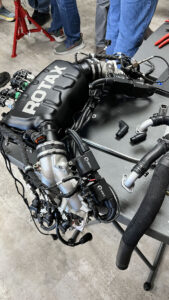
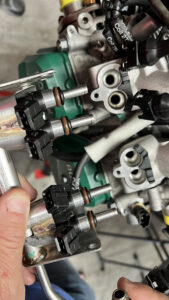 The Maintenance class got a little more interesting. We removed components from the three engines in the classroom on the first day, then we came back the next day and put them back together. We had the engines down to the case; we didn’t remove the crank, cam, or lifters. We divided into three groups, and we split ourselves based on the engine type we wanted to learn about, so myself and some others went to the 912iS, which is injected. So no carbs for us…
The Maintenance class got a little more interesting. We removed components from the three engines in the classroom on the first day, then we came back the next day and put them back together. We had the engines down to the case; we didn’t remove the crank, cam, or lifters. We divided into three groups, and we split ourselves based on the engine type we wanted to learn about, so myself and some others went to the 912iS, which is injected. So no carbs for us…
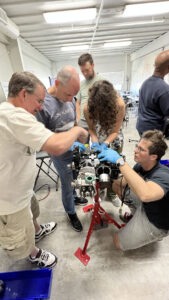 The class was well worth the time. It came with a little bit of sticker-shock, but it was good to get how-to information from someone who does the work every day. I came away with a new respect for these engines. We were told that Rotax produces 100,000 engines per year; not just for aircraft, but for all kinds of vehicles including Jet-skis, motorcycles, boats and snowmobiles. Therefore they can invest in R&D, where conventional aircraft engines consist of old technologies with very little advancement. These engines are robust, yet simple.
The class was well worth the time. It came with a little bit of sticker-shock, but it was good to get how-to information from someone who does the work every day. I came away with a new respect for these engines. We were told that Rotax produces 100,000 engines per year; not just for aircraft, but for all kinds of vehicles including Jet-skis, motorcycles, boats and snowmobiles. Therefore they can invest in R&D, where conventional aircraft engines consist of old technologies with very little advancement. These engines are robust, yet simple.
You can get more information about Rotax Training providers or the engines themselves at flyrotax.com






